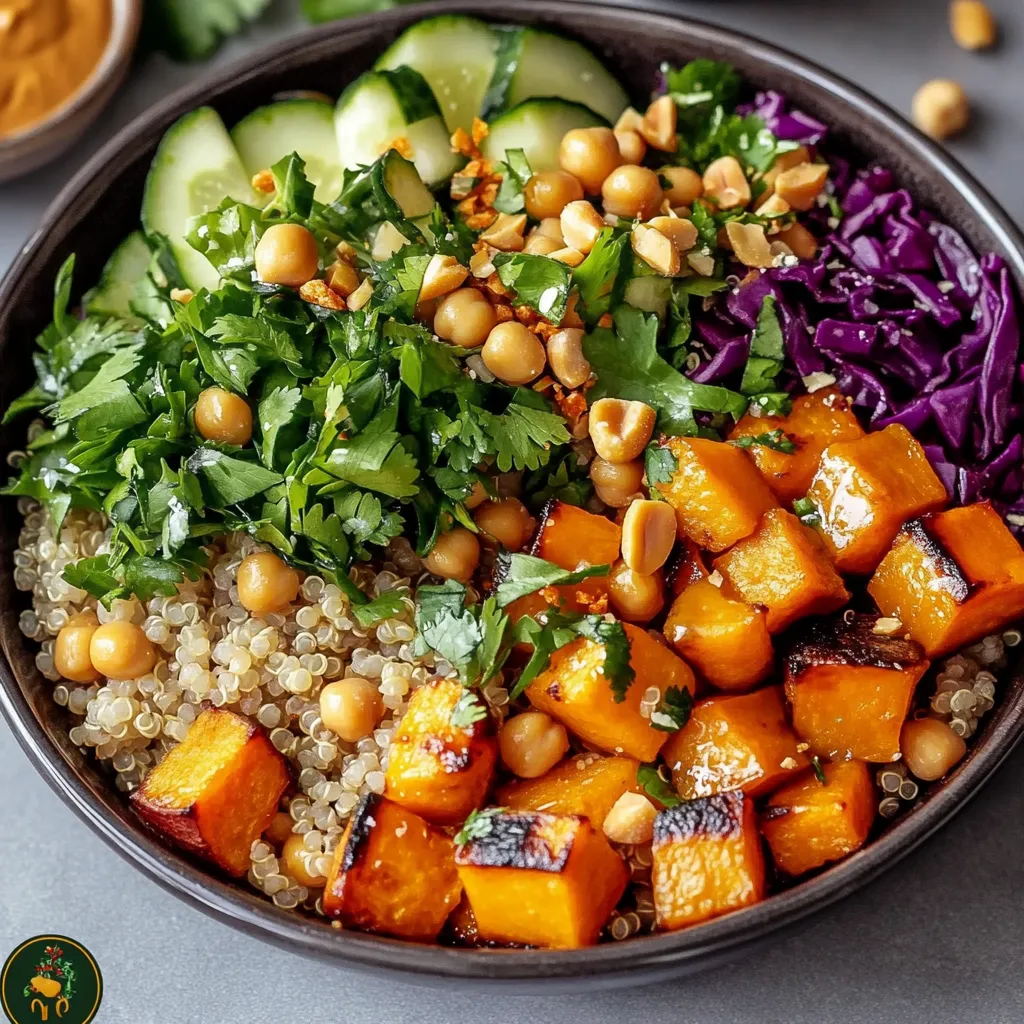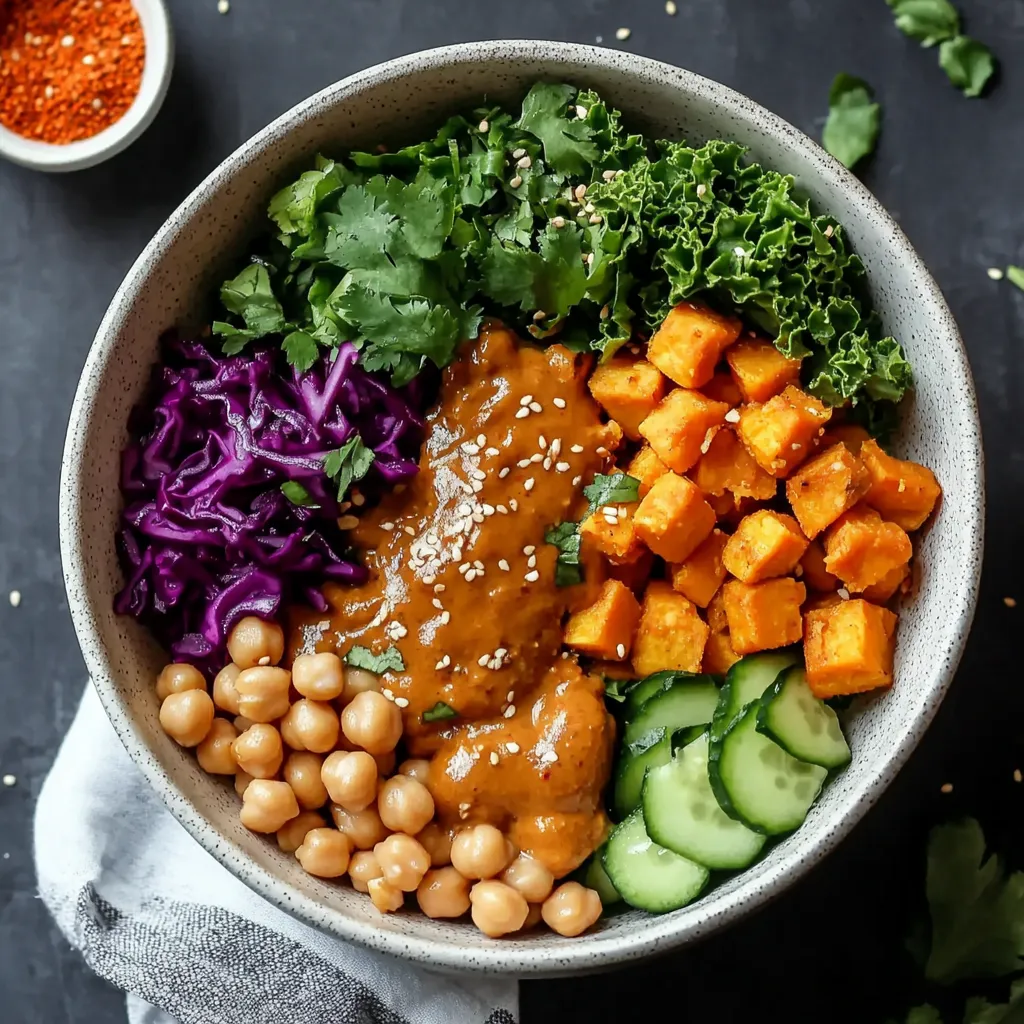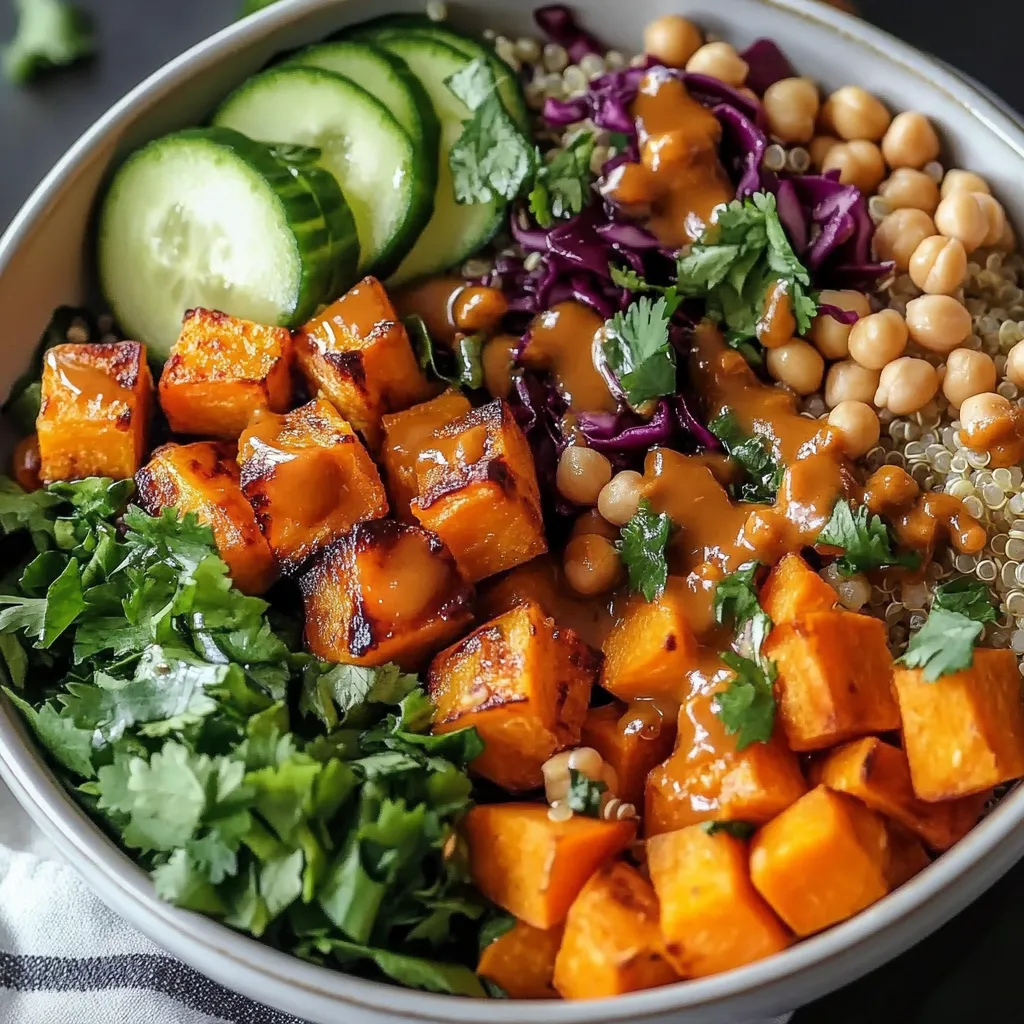 Pin it
Pin it
Colorful ingredients blend together in this delicious Thai Peanut Sweet Potato Buddha Bowl, where everything brings unique character to make a well-rounded dish. Caramelized sweet potatoes, nutrient-packed quinoa, and fresh veggies come together under a smooth peanut drizzle that gives it that unmistakable Thai-inspired kick.
I began crafting these bowls when I was eating more plants, and this mix quickly became something everyone at home couldn't get enough of. My big breakthrough was cooking the sweet potatoes till they get those crispy brown edges - it brings everything in the bowl to life.
Key Ingredients Breakdown
- Sweet potatoes: Go for solid, orange ones for the best taste. Try to pick similar sized potatoes so they cook evenly
- Quinoa: Don't skip washing it first to get rid of the bitter coating. Any color works great
- Chickpeas: Drain and rinse canned ones really well. Cooking your own gives you better texture
- Peanut butter: Stick with the simple stuff without added sweeteners. Skip any with extra oils
- Fresh ginger: Look for pieces that feel heavy and have smooth skin for maximum flavor
- Vegetables: The crunchier your cabbage and peppers, the better your bowl will be
 Pin it
Pin it
Simple Cooking Instructions
- Sweet potato preparation:
- Cut peeled sweet potatoes into chunks about an inch big. Mix with olive oil until they're all coated. Sprinkle with salt, pepper, and curry powder if you want. Lay them out on a baking sheet with parchment paper, giving them space. Cook at 400°F, flip them once, and wait for those tasty brown edges.
- Perfect quinoa:
- Wash quinoa really well until the water looks clear. Toss it in a dry pot for a minute to bring out the nutty taste. Pour in twice as much water or broth as quinoa. Let it boil, then turn down the heat and cook 15-20 minutes. Keep it covered for 5 more minutes after cooking, then fluff it up.
- Signature peanut sauce:
- Stir your peanut butter till it's smooth. Mix in soy sauce, fresh lime juice, crushed garlic, and ginger. Add warm water slowly until it's the thickness you like. Balance with a touch of honey or maple syrup. Spice it up with chili or Sriracha if you want some heat.
- Vegetable preparation:
- Cut your cabbage into super thin strips. Slice bell peppers into skinny matchsticks. Cut cucumbers at an angle for a fancy look. Keep all your cut veggies in different containers.
- Assembly process:
- Put a layer of greens down first. Add a scoop of quinoa to one side. Put the sweet potatoes next to it. Group your veggies by color around the bowl. Add some warm chickpeas. Pour the peanut sauce over everything. Top with fresh herbs and crushed peanuts.
This bowl shows up on my table every week now. My favorite part is how the hot sweet potatoes gently soften the greens underneath while the raw veggies on top stay super crunchy. It's this amazing mix of warm and cool, soft and crisp.
Looking Back: After making countless versions of this bowl, I've realized it's more than just good food - it's a whole experience. The bright colors lift your mood, every forkful tastes a bit different, and there's something really rewarding about turning simple ingredients into something so pretty. The peanut sauce has become such a staple at my house that I always have some ready to go - it's that addictive. Whether you're just starting to eat more plants or just want something that's both good for you and tastes amazing, this bowl shows that healthy food can look gorgeous and fill you up completely.
 Pin it
Pin it
Frequently Asked Questions
- → Can I prep this bowl ahead?
- Absolutely! Store the parts in separate containers and add greens and dressing when you're about to eat.
- → What's a gluten-free swap for soy sauce?
- Tamari is a great replacement, and make sure to use certified gluten-free quinoa.
- → What can I use if I don't eat peanuts?
- Try almond butter or sunflower butter instead—they work wonderfully.
- → Does the peanut sauce keep well?
- Yep, it lasts up to a week in the fridge if stored in a sealed container.
- → Are there other veggies that fit?
- For sure! Roasted broccoli, carrots, snap peas, or edamame work great too.
